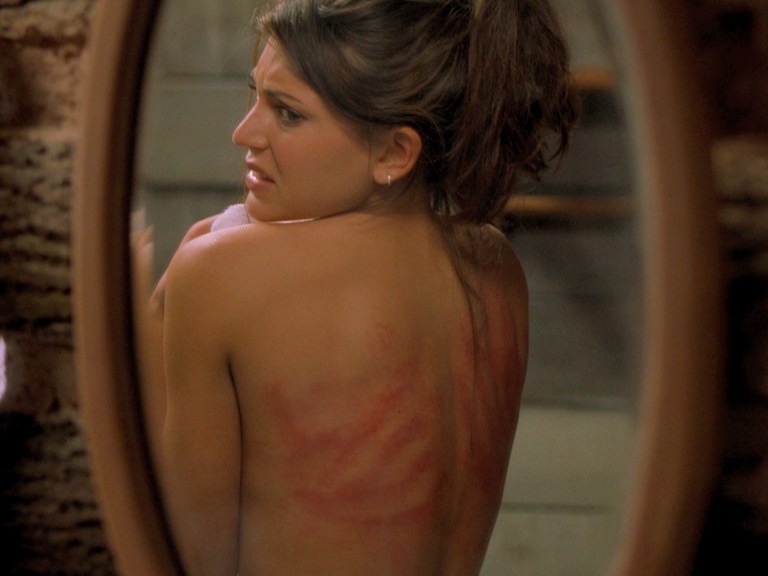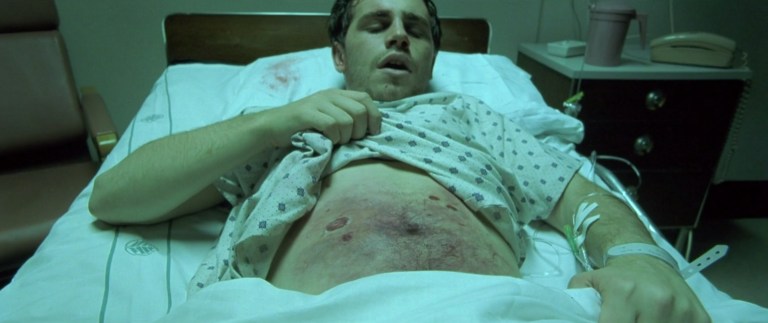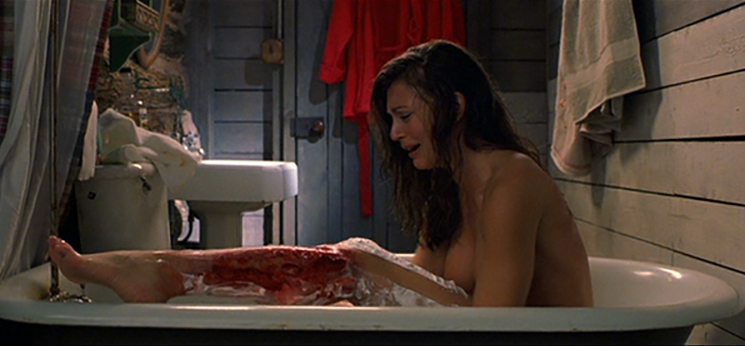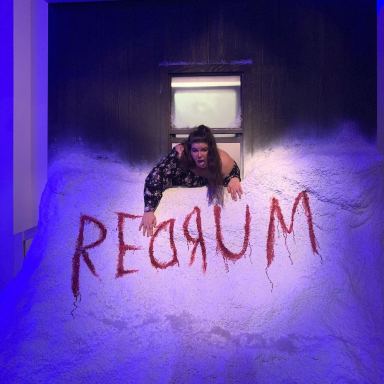Is ‘Cabin Fever’ (2002) Based on a True Story?
Neff says he needed 24/7 medical care for 13 days in order to get rid of the bacteria and says Cabin Fever’s special effects are totally accurate.

Cabin Fever (2002) was Eli Roth’s directorial debut. He wrote the film with his former NYU roommate, Randy Pearlstein, while he was working as a production assistant for the film Howard Stern’s Private Parts (1997). Roth went on to write and direct Hostel (2005), The Green Inferno (2013), and Knock Knock (2015), among other films. He also hosts the series Eli Roth’s History of Horror.

The movie is about five college friends: Jeff (Joey Kern), Marcy (Cerina Vincent), Paul (Rider Strong), Karen (Jordan Ladd), and Bert (James DeBello), who go to a dilapidated cabin in the woods to celebrate their spring break. While the expected route for the film to take is that some sort of danger befalls the group from the outside, the actual terror comes from the water they drink. As a flesh-eating virus begins to spread, relationships splinter and the group erupts in chaos.
Filming took place at a cabin on a 3,200-acre Boy Scout camp in North Carolina where the Scout’s “Mountain Men” program used to be held. Taking a break between scenes, Rider Strong (most famous for playing Shawn Hunter in Boy Meets World) went for a walk in the woods despite being covered in fake blood. He actually ran into a group of girls on a school field trip who thought they were seeing a recently murdered Shawn Hunter! When they realized it was Rider Strong filming a movie, they chased him back to set.

Roth infused the film with some personal history. The movie’s inspiration came from an experience he had while traveling in Iceland when he was 19. While working on a horse farm, he came into contact with rotted hay and contracted an infection that caused him to break out in sores. When he scratched, “chunks of flesh” fell off. One of the most gruesome and upsetting scenes in Cabin Fever is directly based on this experience, as his skin “peeled off” when he shaved.

He wasn’t the only one on the Cabin Fever set with personal experience with the subject matter. John Neff, a sound editor who played one of the victims in the film, once contracted flesh-eating bacteria himself during a routine surgery. Neff says he needed 24/7 medical care for 13 days to get rid of the bacteria and says Cabin Fever‘s special effects are totally accurate.
The initial idea for Cabin Fever came while I was working on a horse farm in Iceland when I was 19 years old. I had been cleaning out a barn and got a skin infection on my face. I woke up in the middle of the night scratching my cheek, thinking I had a mosquito bite. I looked down at my hand and saw chunks of skin. The next morning I attempted to shave and literally shaved half my face off. The strangest part was not only did it not hurt—it actually satisfied some strange itch underneath my skin. I went to see a dermatologist, who, judging by the horrified and puzzled look on her face, had never seen anything like it before. She gave me steroid creme and luckily, my face cleared up.
Eli Roth, on the inspiration for Cabin Fever
While it was made long before the COVID-19 pandemic, the themes of Cabin Fever deal with what we’ve all been going through the past few years. How do you stop the spread of a disease while still treating the infected people like human beings who are worthy of dignity and care? Roth was ahead of his time in suggesting that selfishness and paranoia would come to be more defining aspects of a pandemic than the disease itself.

An unrelated morbid fact about Cabin Fever is that auditions were taking place on September 11, 2001, and one of the scenes being read included the dialogue, “[It’s] like being on a plane, when you know it’s gonna crash. Everybody around you is screaming ‘We’re Going Down! We’re Going Down!’ and all you want to do is grab the person next to you and fuck them, because you know you’re going to be dead soon, anyway.”
Cabin Fever is remembered as a homage to the low-budget horror movie, with many references to other films hidden in plain view. For instance, when the friends drive to the cabin, the song playing on the radio was composed for The Last House on the Left (1972). Fever became one of many “murder cabin in the woods” reference points for the meta horror satire movie The Cabin in the Woods (2011). While not all film critics “got” it, Cabin Fever has a cult following including director Quentin Tarantino, who said it was “the future of horror” and director Peter Jackson, who screened the film twice for cast and crew while making The Return of the King (2003) in New Zealand.
Eli Roth’s unrated director’s cut was released after the success of Inglourious Basterds (2009). A sequel and a prequel were made, and in 2016, Cabin Fever was remade with Roth as the executive producer.
